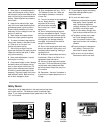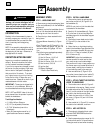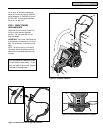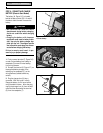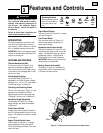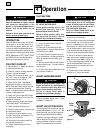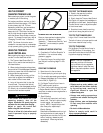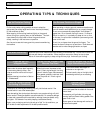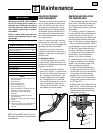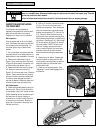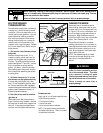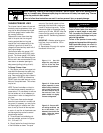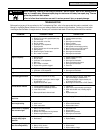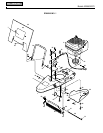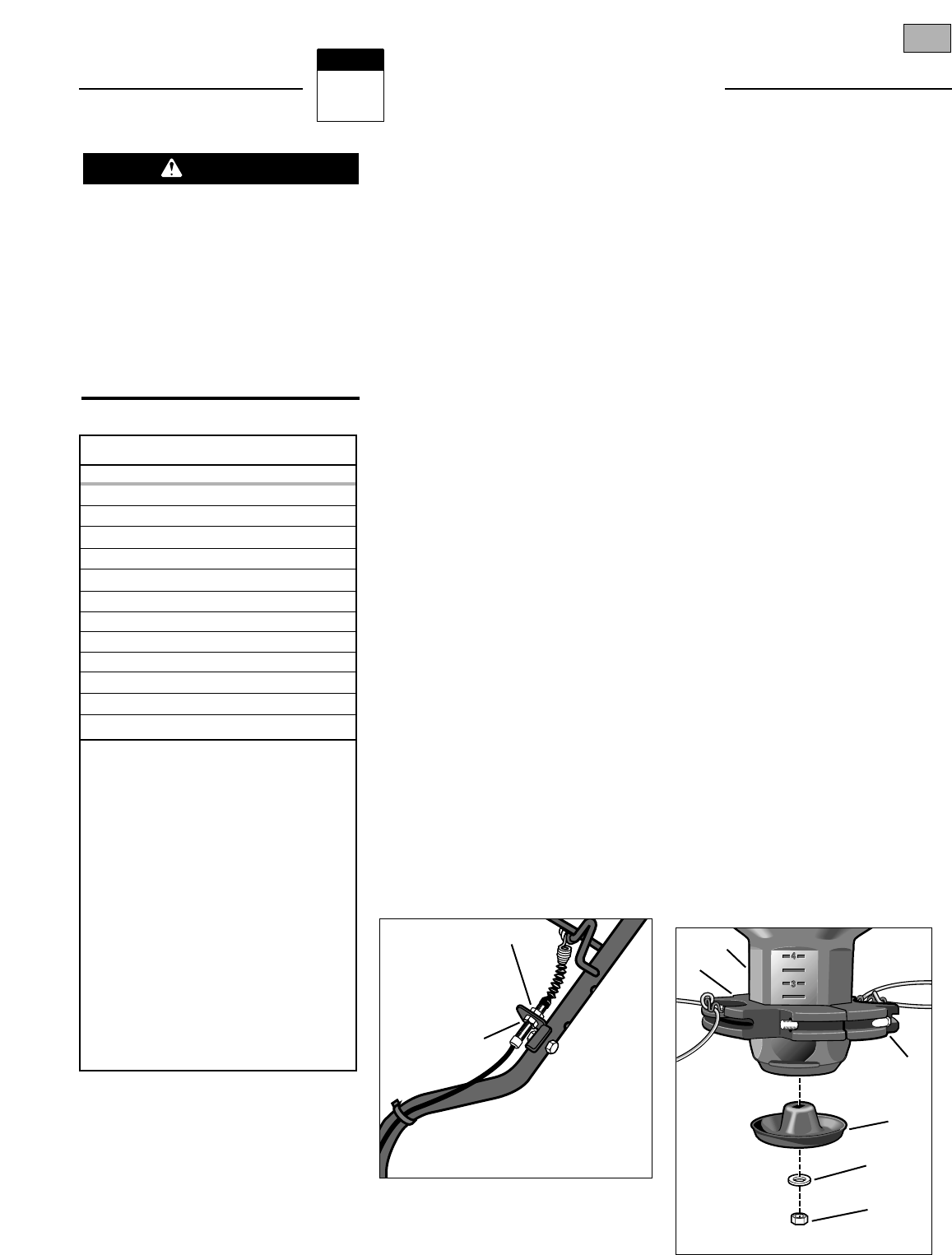
Maintenance
5
Section
13
Before inspecting, cleaning or
servicing the machine, shut off engine,
wait for all moving parts to come to a
complete stop, disconnect spark plug
wire and move wire away from spark
plug. Remove ignition key on electric
start models.
Failure to follow these instructions can
result in serious personal injury or prop-
erty damage.
WARNING
MAINTENANCE SCHEDULE
PROCEDURE NOTES
Check motor oil level 2, 3
Check trimmer/mower lines 2, 6
Check trimmer head engagement 2
Engine/machine cleaning 2, 7, 8
Check nuts and bolts 2
Change motor oil 1, 11
Service air filter system 4, 11
Clean under deck 4
General lubrication 4
Inspect drive belt 5
Clean engine 2, 10
Check trimmer head wear cup 3, 9
NOTES
1 - After first 2 hours of break-in operation; every
25 hours thereafter.
2 - Before each use.
3 - Every 5 operating hours.
4 - Every 25 operating hours.
5 - Every 100 operating hours.
6 - New line replacement is suggested when old
line is 50% or less of original length.
7 - Clean daily in extremely dusty or dirty
conditions.
8 - See Engine Owner’s Manual for service
recommendations.
9 - Replace when severe gouges exist on bottom
surface
10 - At each fuel refill.
11 - Service more often if used in extremely dusty
or dirty conditions (see Engine Owner’s
Manual).
ADJUSTING TRIMMER
HEAD ENGAGEMENT
The tension on the drive belt must be cor-
rect for proper operation of the trimmer
head. If the tension is correct, the trim-
mer head will rotate when the Trimmer
Head Control Bail is pulled back against
the handlebar (another indication of cor-
rect tension is if the engine stalls when
the trimmer head becomes bound up in
very tough material).
A worn or loose drive belt will cause the
trimmer head to move slowly – or not at
all – when the control bail is engaged (belt
squealing may also be noticeable).
If the tension is too tight, the trimmer
head may rotate before the control bail is
engaged, or when there is no free play in
the control bail.
To Adjust Belt Tension
1. Stop the engine and wait for all parts
to stop moving. Adjust the two jam nuts
on the control cable adjustment stud (see
Figure 5-1) as follows:
a. To tighten belt tension, thread the
upper nut (A, Figure 5-1) upward one or
two full turns, followed by the lower nut
(B). Tighten both nuts securely. Test
unit and readjust jam nuts as needed.
b. To loosen belt tension, thread the
lower nut (B) downward one or two full
turns, followed by the upper nut (A).
Tighten both nuts securely. Test unit
and readjust jam nuts as needed.
REMOVING AND REPLACING
THE TRIMMER HEAD
1. Stop the engine and wait for all moving
parts to stop. Disconnect the spark plug
wire and move it away from the spark
plug. Remove the ignition key on electric
start models.
2. Two bolts (A, Figure 5-2) secure the
trimmer head (B) to the spindle head (C).
Loosen both bolts (not the nuts) just
enough to allow the trimmer head to slide
down the spindle head and past the two
stops. Do not attempt to remove the bolts
– they are permanently attached. NOTE: It
may be necessary to remove the wear cup
(D, Figure 5-2) when replacing the trim-
mer head. See Step 4 for instructions.
3. Install the new trimmer head on the
spindle head. Tighten the hardware
securely (to 75 in/lbs.) and evenly.
4. Inspect the wear cup (D, Figure 5-2)
for signs of severe wear, such as deep
gouges. Use the following steps if the
wear cup needs to be replaced:
a. Insert a Phillips head screwdriver
into the small hole at the top, front of
the deck (see Figure 5-5) and rotate the
trimmer head until the screwdriver
engages a hole in the trimmer head.
This will prevent the trimmer head from
turning when you next remove the hex
nut (E, Figure 5-2).
b. Remove hex nut (E), washer (F) and
wear cup (D). Install the new wear cup
and reinstall the washer and hex nut.
Tighten securely and remove Phillips
screwdriver from deck.
NOTE: LEFT and RIGHT sides of unit are
as viewed from operator’s position behind
the handlebars.
Figure 5-1
B
A
A
B
E
C
D
F
Figure 5-2



